Interview: Introducing Whale Species of Skjálfandi Bay with Maria Glarou
Maria Glarou is a Doctoral Graduate Student at the University of Iceland, and her research is based in our hometown, Húsavík. For her PhD, she is studying the allometry of thermoregulatory adaptations of different-sized cetaceans in the northern Icelandic waters.
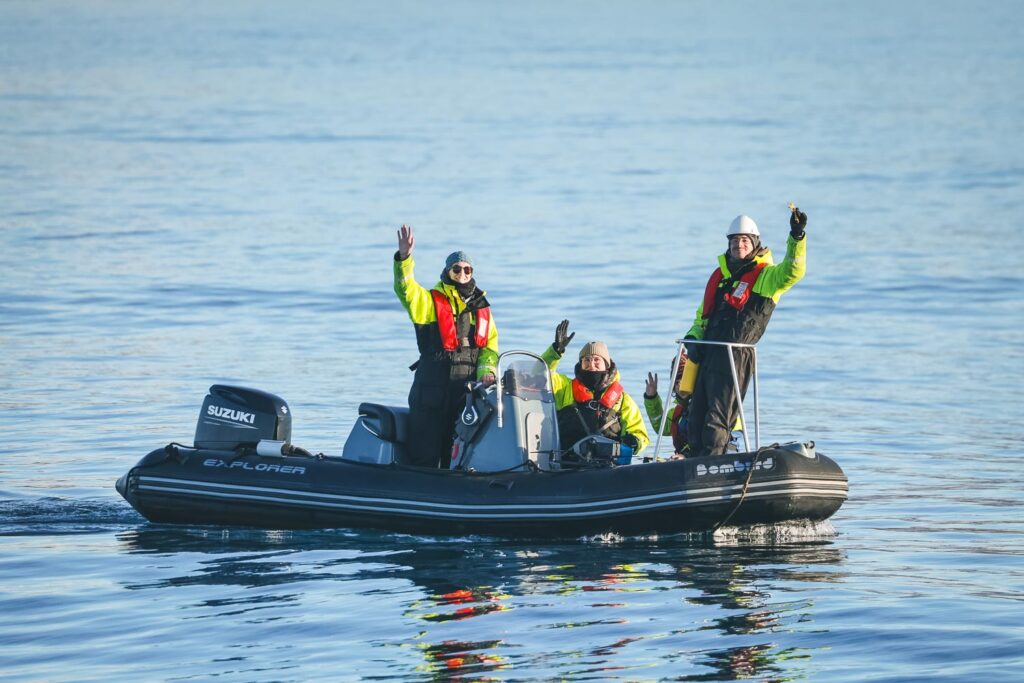
Amazing and unique drone footage of whales
Maria is using a drone for her research, and thanks to this technology, she has captured amazing whale footage that has probably never been recorded in Iceland before. Throughout our social media channels, we will introduce you to the most common species we spot on our tours from a bird’s eye view.
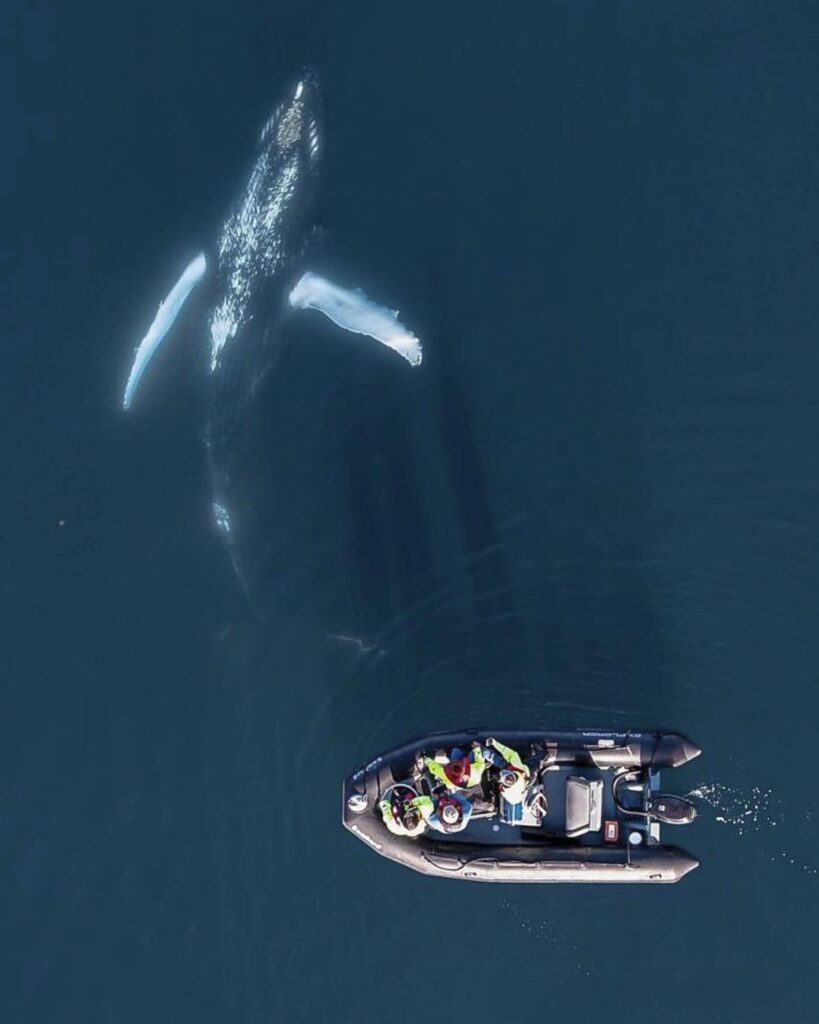
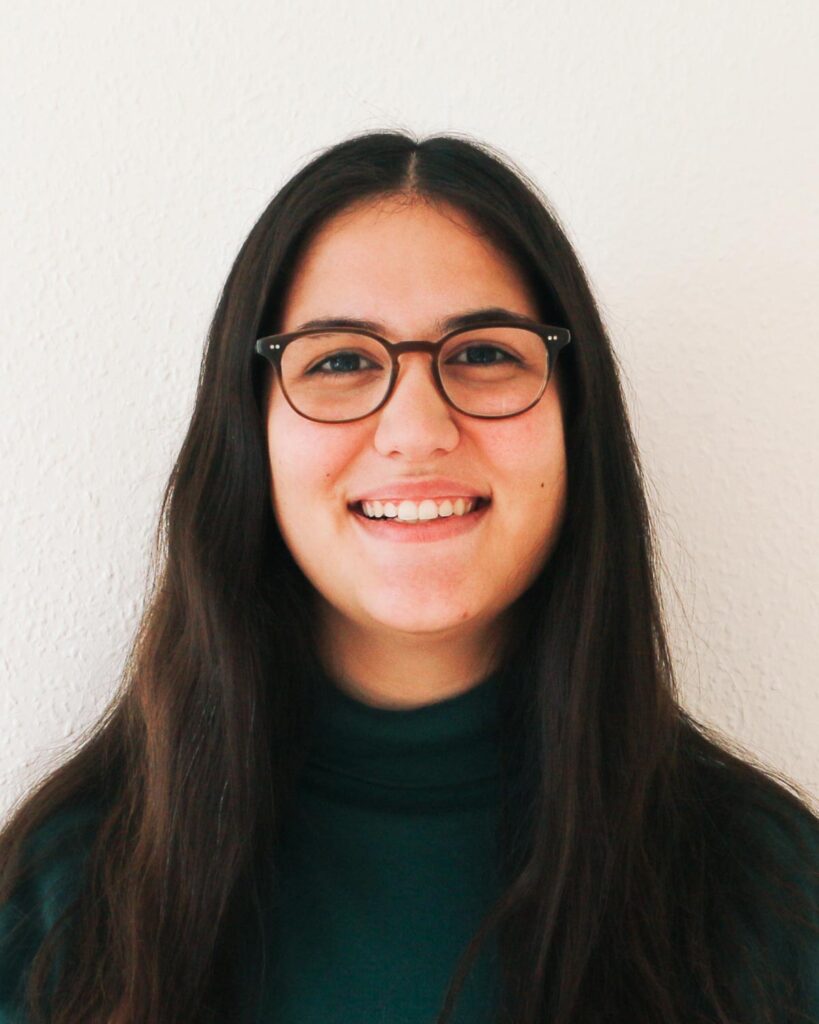
North Sailing supports whale research in Skjálfandi Bay
North Sailing has been an active partner with the Research Center in Húsavík from the beginning and has always been open to supporting the students in their science and research projects. In fact, if you join one of our whale watching tours, you will most likely see researchers on board, mainly conducting photo ID to help monitor whale species in Skjálfandi Bay. But you could also meet Maria as she sometimes joins our whale watching boats to conduct her research as well.
We were interested in knowing more about the background and nature of Maria’s research, so we sat down with her and asked a few questions about her passion for whales and how she ended up in Húsavik:
Hello Maria, how is it going? What have you been up to lately?
You want an honest answer? Wow, I’ve been busy! In the last two months, I’ve been really focused on writing and processing the data we collected. Fieldwork is less frequent nowadays, and we don’t sail out as often. Now, I finally have more time to work in the office. I’m currently in the process of completing the first chapter of my PhD, which is about heat loss in different species of whales in Skjálfandi Bay.
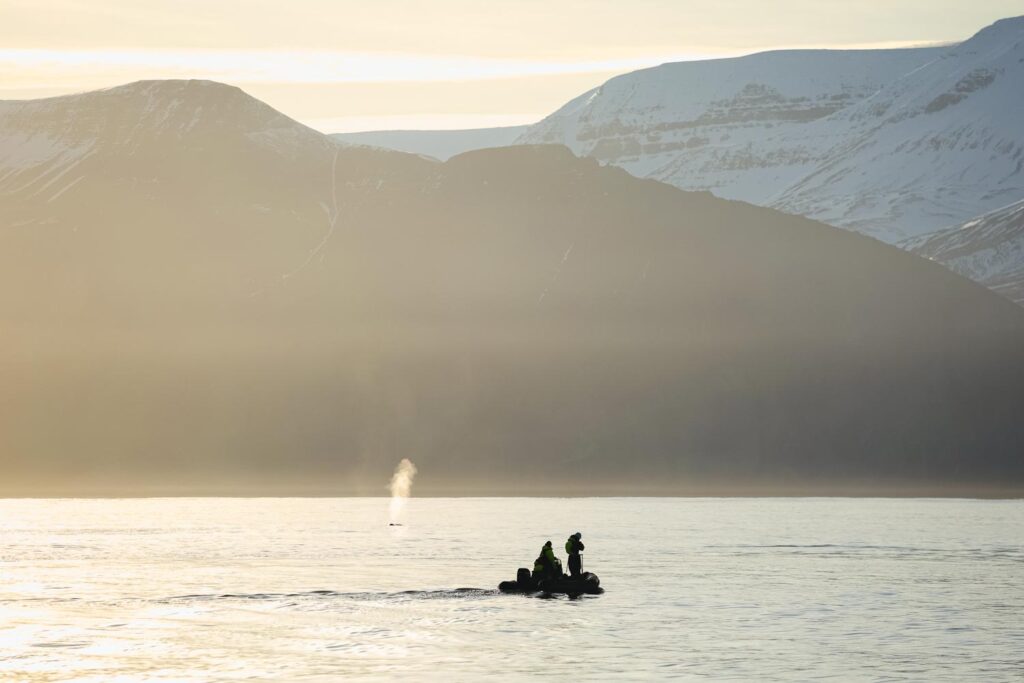
Can you provide a brief overview of your background and how you became interested in studying whales?
I was always passionate about the sea as a kid growing up in Greece. I could see the sea from our home and every summer we used to go to my grandparents’ summer house, where I would spend hours at sea, snorkeling! When deciding on my university studies, I was interested in biology and went for that for my bachelor’s. During my last year there, we had a course about marine ecology and the sea, and I was intrigued by it, so I did my thesis on small coastal fish and sea snails (not whales yet).
Just before finishing my bachelor’s, I had an internship here at Húsavík Research Center in 2017, and I came for two months in February. It was really cold, but I loved it. We were joining North Sailing every day to collect data for photo ID, which other interns are still doing up to this day. That was my first experience seeing whales. By the way, my first whale was a blue whale! I was really lucky. After that, I moved abroad to continue with my studies and did my master’s in marine biology. From that point, I was more focused on whales, and later, I aimed to return to Iceland to get my PhD here. So, it is now a full circle.
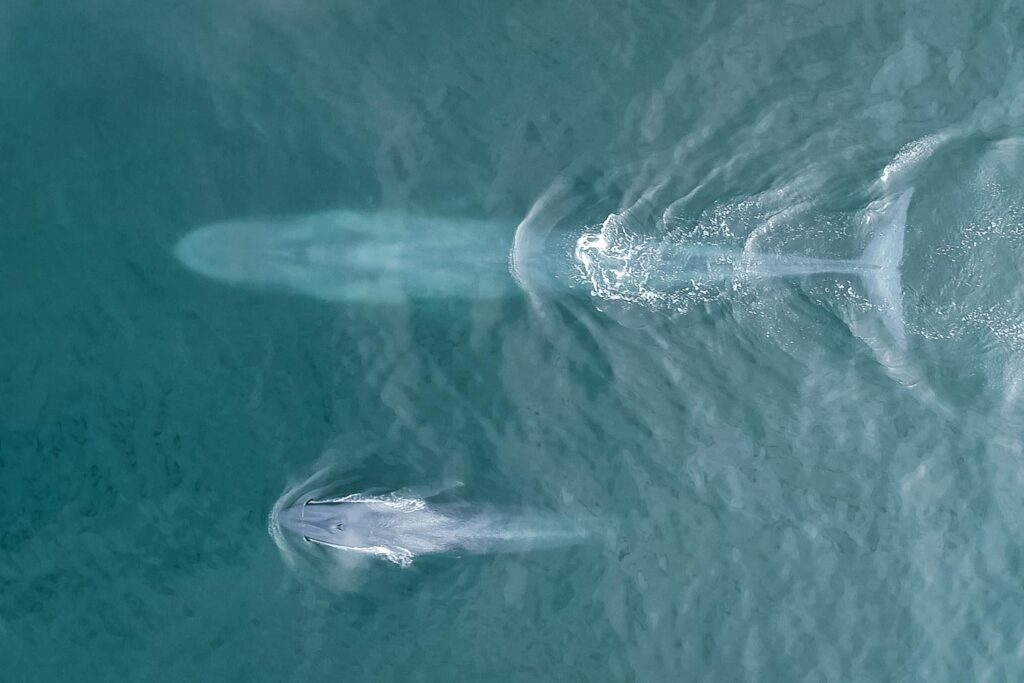
Can you share how using drone technology is important for your research on the allometry of physiological and behavioral thermoregulatory adaptations in cetaceans?
The drone technology is essential for my PhD, as it allows me to measure the size of an individual whale using a method called photogrammetry. Knowing the size of the animals, I am able to examine how certain adaptations that allow these animals to live in this cold environment are changing with the size of the animal. My study is a comparative project, where I explore how these characteristics change among five different species of whales and dolphins and how these species are able to live in Skjálfandi Bay year round.
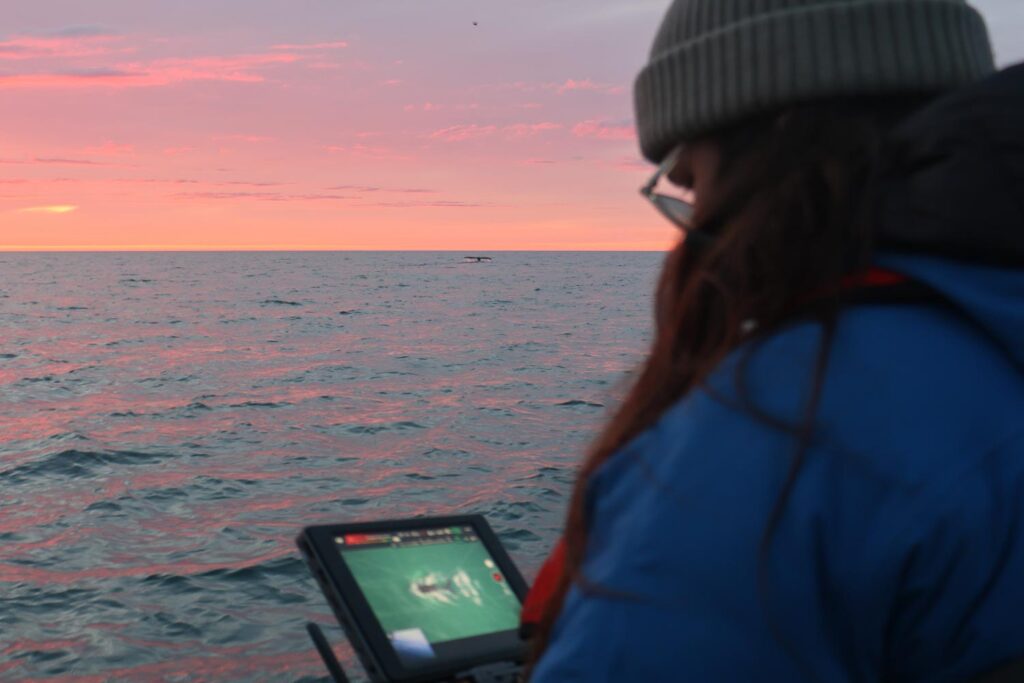
Over the past few years, you have captured some amazing footage that has never been seen before. Are you aware of that?
(Laughing) In a way, but sometimes I don’t realize that I’ve been truly privileged to witness and also capture some amazing moments with these animals. I’m really grateful for what I’m doing. Now I’m happy to share it with a wider audience, thanks to you guys.
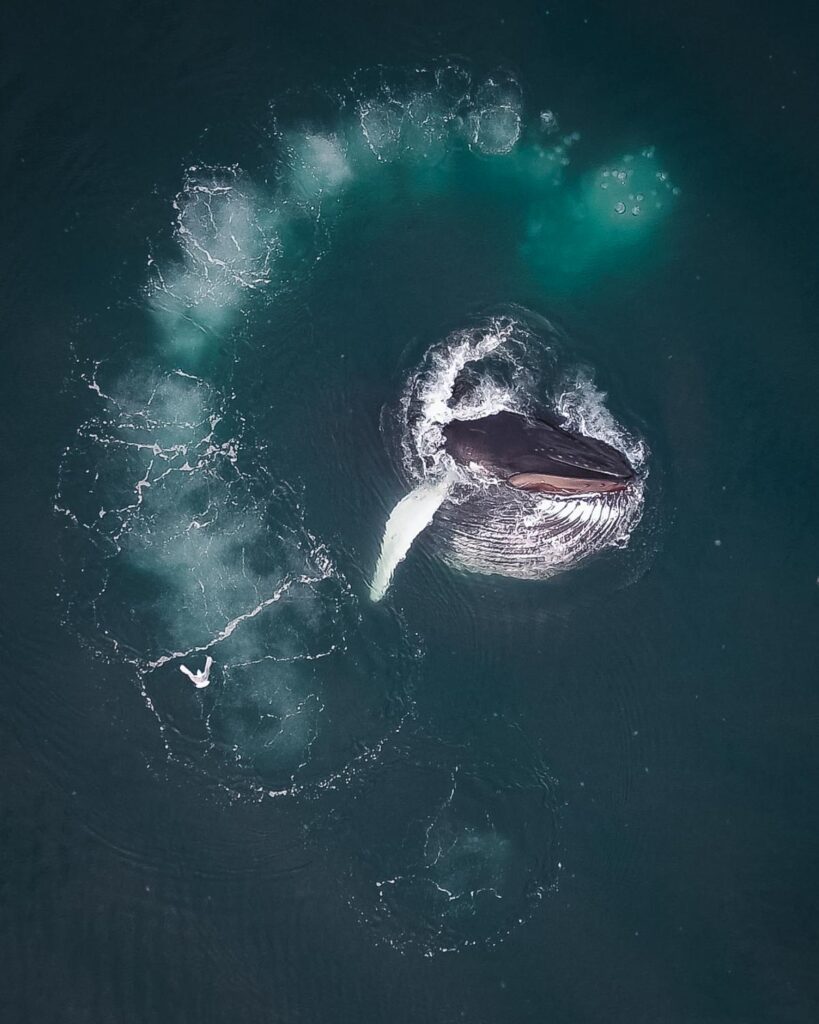
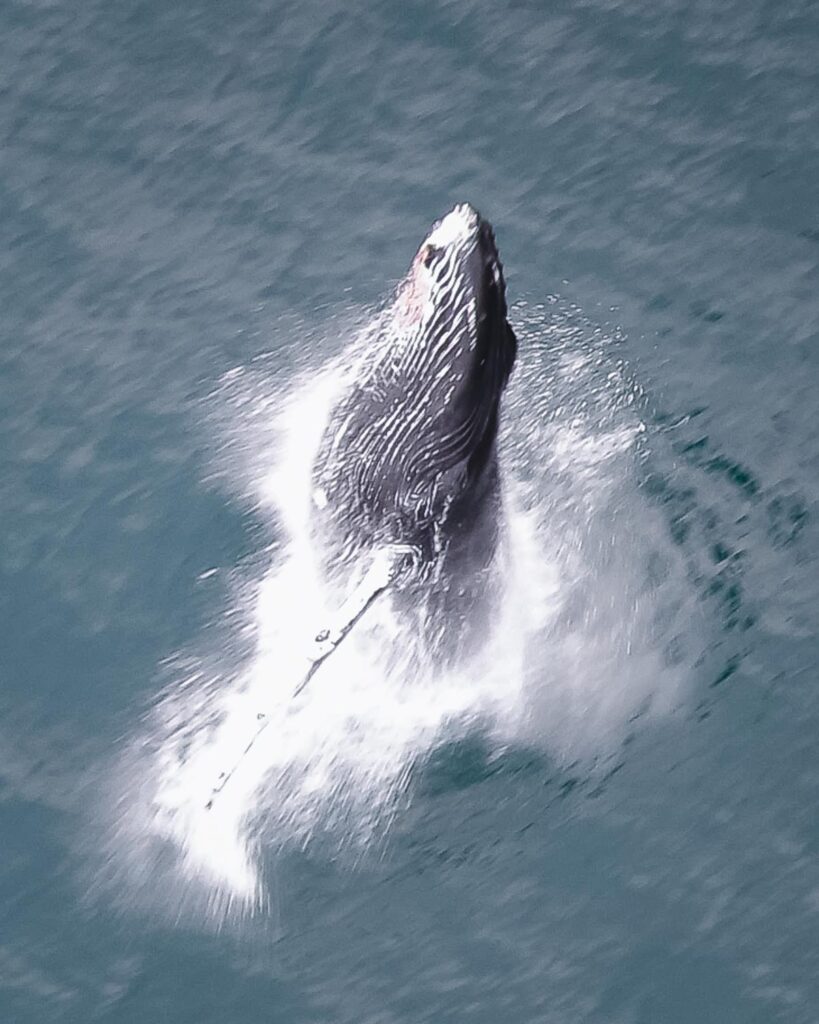
Why did you choose Húsavík and the northern Icelandic waters as the location for your research?
Except for the fact that I really love Iceland, and I think it’s one of the most beautiful places in the world, this area is perfect for my research. Skjálfandi Bay is particularly special to me because I started here. I saw my first whale here, and from a scientific perspective, it’s a really nice place because so many different whale species live in this area, making it a perfect place for my study. And yes, I also have my heart here.
Using your drone footage, can you introduce us to some of the most common whale species found in Skjálfandi Bay?
For my PhD, I’m focused on 5 species:
The smallest cetacean is the harbour porpoise. They are common here and live here all year round, but they are very shy and hard to study. We see them more often than we are able to capture them. I also study white-beaked dolphins, and minke whales that can be seen all year round as well. Then the most popular and common ones are humpback whales! And then blue whales – the largest animal ever known to exist on this planet – are mostly seen in May, June, early July, and the 2023 season was a dream. We saw so many blue whales!
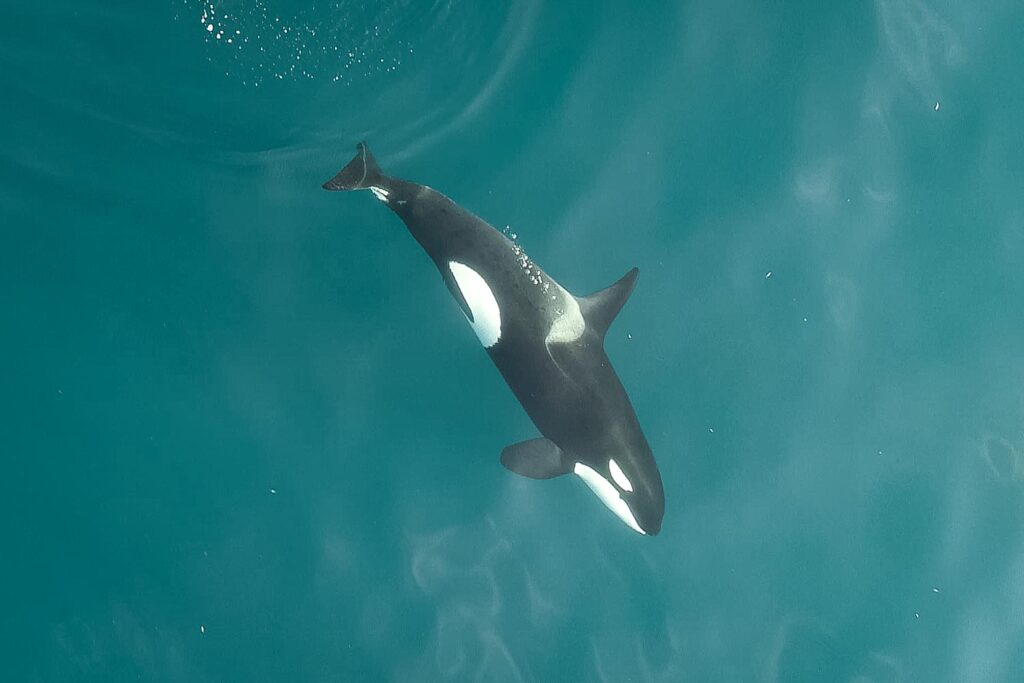
These are the 5 whale species that I’m studying, but while I’m out there, I was able to record footage of sperm whales, orcas, pilot whales, northern bottlenose whales, fin whales, and our famous blue and fin whale hybrid!
Do you think sharing bird’s eye view footage with the public can impact their awareness and appreciation of cetaceans and marine life?
Absolutely! I believe drones offer a truly unique perspective. You can really observe behavior that is not visible from water level, it opens new doors. I think we can all agree the bird’s eye view is something special, and when people see this, they can truly understand how beautiful these animals are. It can help humans to connect with them deeply and by appreciating them more, we can encourage people to take better care of our oceans, ultimately contributing to conservation efforts.
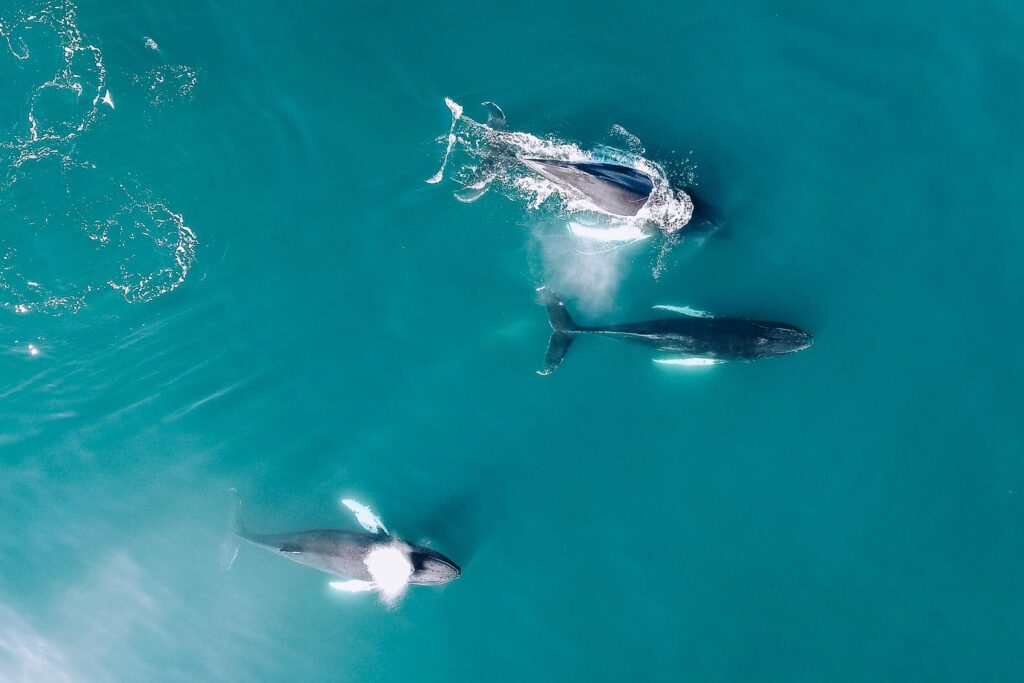
Are there unique environmental factors in Skjálfandi Bay that make it an ideal location for studying these cetaceans?
I guess the fact that we have so many different species must mean that there is just a lot of food for them here. We’re not in a fjord, but Skjálfandi Bay is still relatively sheltered compared to the open sea, so this allows us to spend more time in the field and study these species. We also have a lot of diversity here compared to other places in Iceland, which really makes this place very interesting and suitable for research.
How do you like the collaboration with North Sailing?
I’m super happy to have this collaboration with you. I really appreciate that you will be sharing my videos with more people. I’m sure your audience loves whales, and hopefully, some people will develop a deeper connection with them and an appreciation for our ocean.
I also very much appreciate that I can join your tours when I don’t have our tiny research boat available. This allows me to use your boats as an extra platform for my data collection. It’s also nice and interesting for the passengers to know what I’m doing. I typically get a lot of questions! So, it’s really nice to share my research.
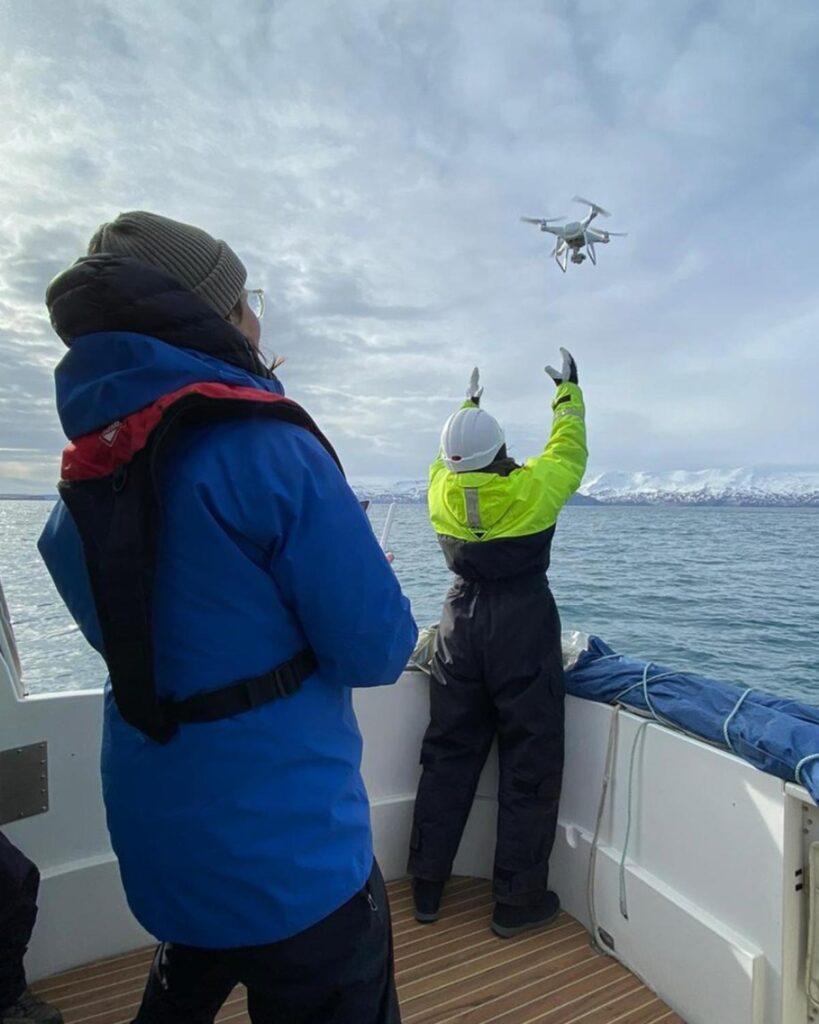
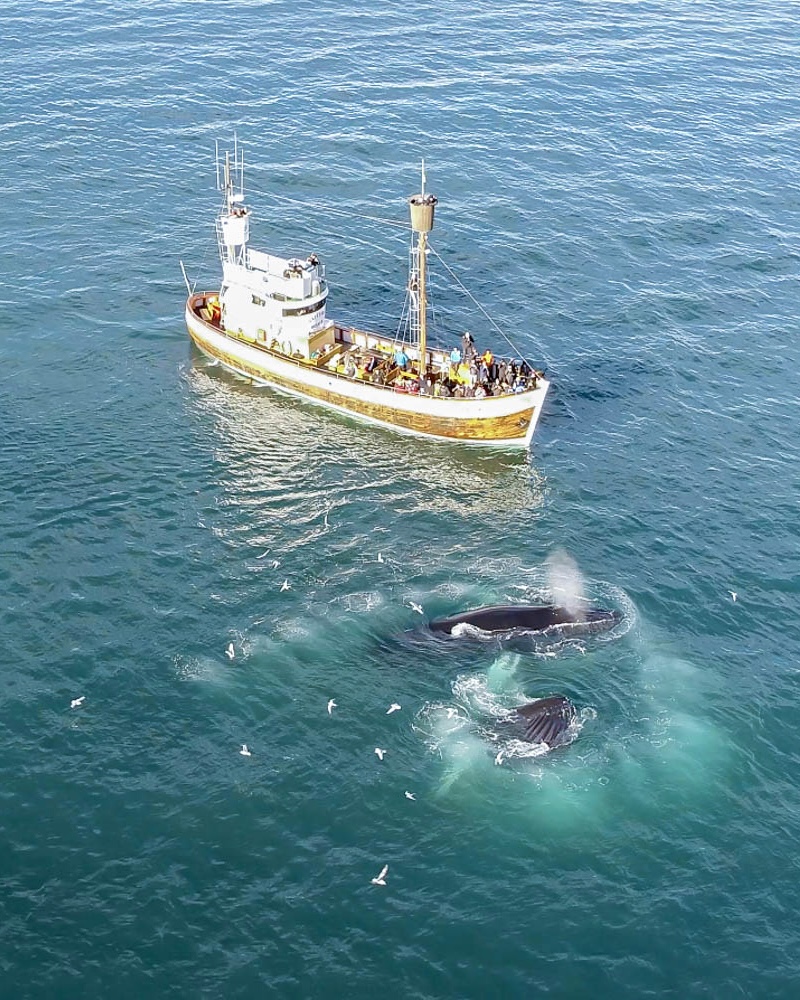
Can you share your favourite encounter with whales in Skjálfandi Bay?
Wow, it’s very difficult to pick just one. I always dreamed about a super curious humpback around our tiny Zodiac, and it happened two times this summer! It was just incredible to see this big animal next to us, not even a meter away or just under our boat, being interested in you, not the other way around!
I have many amazing experiences! I don’t know if I should say it, but here you go: We went out at 7 am and spotted a blue whale, then we realized there is a calf next to mum. Amazing! We got a drone up, we confirmed that it was mother and calf, we filmed it, got the drone down. And then all of a sudden there were splashes, and it turned out to be a baby blue whale breaching in a way. And that’s extremely rare! It was from quite far away, but the experience would make it to my top 3!
Then there is one more amazing experience to share! We had an incredible humpback which was doing all the behaviors for one hour straight in rotations, from tail slapping, turning around, breaching, head slapping, lobtailing… really all the behaviors that you can imagine! So that’s my top 3!
Hey, it’s not always like this! But I still get very excited when I’m “just” seeing whales breathe and dive.
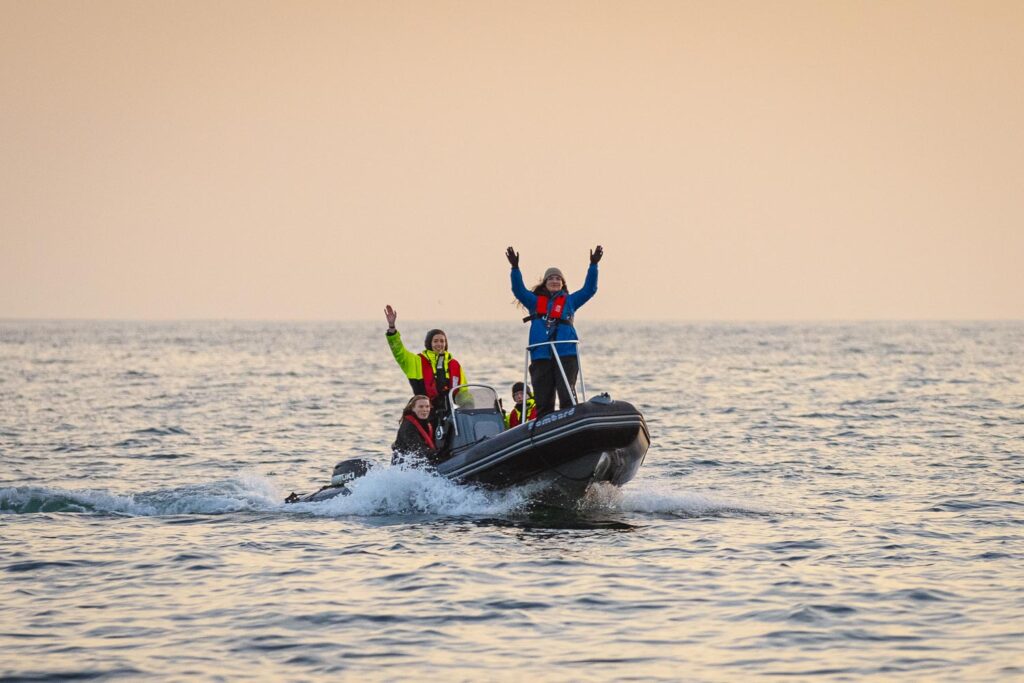
Are there specific questions or areas of cetacean research you hope to explore in the future?
Yes, sure, I have some ideas. I will do my PhD for one more year and after that maybe I will apply to a postdoc program focusing on one whale species, so I can go more in-depth. I would love to study more in detail the humpback whale, or blue whales, possibly the Sperm whale, so many species to pick from (laughing). But I’m pretty sure I will continue using drones!






